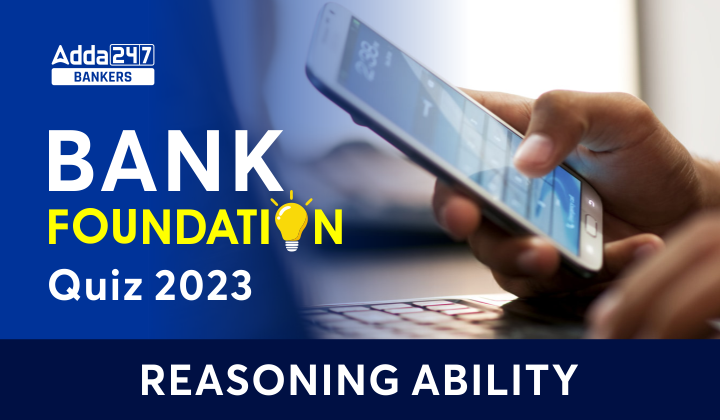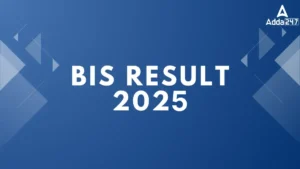Direction (1-5): In the following questions assuming the given statement to be true, find which of the conclusion(s) among given conclusions is/are definitely true and then give your answers accordingly.
Q1. Statements: U > K = E ≥ S = T, J = K > L ≥ N, Z = R ≥ K > O
Conclusions: I. Z < U
II. Z > N
(a) If only conclusion I follows
(b) If only conclusion II follows
(c) If either conclusion I or II follows
(d) If neither conclusion I nor II follows
(e) If both conclusions I and II follow
Q2. Statements: P < Q = C ≤ N = X, S > N = E > M, Y = J = S > O
Conclusions: I. Y > P
II. O > C
(a) If only conclusion I follows
(b) If only conclusion II follows
(c) If either conclusion I or II follows
(d) If neither conclusion I nor II follows
(e) If both conclusions I and II follow
Q3. Statements: O ≤ T = Q < S, O = U ≥ K > N, P ≤ S = D
Conclusions: I. Q > N
II. U < S
(a) If only conclusion I follows
(b) If only conclusion II follows
(c) If either conclusion I or II follows
(d) If neither conclusion I nor II follows
(e) If both conclusions I and II follow
Q4. Statements: U ≤ P = C ≤ H, R ≥ C < E = Z, P = F ≤ S = T
Conclusions: I. F > Z
II. R ≥ U
(a) If only conclusion I follows
(b) If only conclusion II follows
(c) If either conclusion I or II follows
(d) If neither conclusion I nor II follows
(e) If both conclusions I and II follow
Q5. Statements: W = E > V < C, D ≤ F = E < X, X < T = H > R
Conclusions: I. W < H
II. C < R
(a) If only conclusion I follows
(b) If only conclusion II follows
(c) If either conclusion I or II follows
(d) If neither conclusion I nor II follows
(e) If both conclusions I and II follow
Direction (6-10): Study the following information carefully and answer the questions given below.
Eight people M, N, O, P, Q, R, S and T are going to office on 9th and 22nd of the following months i.e., March, July, September and November in the same year. Only one people goes to office on one date. M goes to the office on the month of 30 days but not on the date which is multiple of 11. Two persons go to office between M and S. Not more than one people go to office between S and R. R goes to the office in the month of 31 days. Minimum four people visited between P and Q. N goes just before O but not in different month. S and R do not visit the office in the same month. More than two people have gone between M and R. P has visited the office before R.
Q6. Who among the following goes to the office on 9th July?
(a) P
(b) S
(c) T
(d) R
(e) N
Q7. Which of the following statement is false?
(a) R goes to the office on 22nd March
(b) Two people go to the office between N and Q
(c) O goes to the office just before M
(d) N visited on 9th September.
(e) All are true
Q8. Which one does not belong to the group?
(a) Q
(b) S
(c) O
(d) R
(e) P
Q9. How many people visited between R and M?
(a) One
(b) Two
(c) Three
(d) Four
(e) Five
Q10. Q goes to the office on which date and month?
(a) 9th July
(b) 22nd November
(c) 22nd July
(d) 9th November
(e) None of the above
Direction (11-15): Study the following data carefully and answer the questions accordingly.
759 594 396 444 372 423
Q11. What is the resultant if the first digit of the second-highest number is divided by the first digit of the second-lowest number? (Consider approximate number)
(a) 2.1
(b) 1.8
(c) 2.3
(d) 1.6
(e) None
Q12. If one is subtracted from all even digits in the numbers, then in how many numbers, a digit appears more than once within the number?
(a) Two
(b) One
(c) Four
(d) Three
(e) None of these
Q13. If all numbers are arranged in ascending order from the left to the right, then what is the difference between the numbers which are third from the left end and second from the right end?
(a) 190
(b) 171
(c) 221
(d) 118
(e) None of these
Q14. If in each number, 1 is added to the first digit and then the first and the third digit are interchanged in each number then which of the following will be the largest number?
(a) 423
(b) 594
(c) 759
(d) 444
(e) None of these
Q15. If the positions of the first and the second digits are interchanged in each number, then which of the following will be the lowest number?
(a) 444
(b) 396
(c) 372
(d) 423
(e) None of these
Solutions
S1. Ans. (b)
Sol. I. Z < U – False.
II. Z > N – True.
S2. Ans. (a)
Sol. I. Y > P – True.
II. O > C – False.
S3. Ans. (e)
Sol. I. Q > N – True.
II. U < S – True.
S4. Ans. (b)
Sol. I. F > Z – False
II. R ≥ U – True.
S5. Ans. (a)
Sol. I. W < H – True.
II. C < R – False
S6. Ans. (c)
S7. Ans. (e)
S8. Ans. (e)
S9. Ans. (d)
S10. Ans. (b)
S11. Ans. (d)
Sol. Given Series = 759 594 396 444 372 423
Resultant = 5 ÷ 3 = 1.6
S12. Ans. (a)
Sol. After subtraction = 759 593 395 333 371 313
Hence, two numbers appear more than once within the number.
S13. Ans. (b)
Sol. Given Series: 759 594 396 444 372 423
After rearrangement = 372 396 423 444 594 759
Required difference = 594 – 423 = 171.
S14. Ans. (c)
Sol. Given Series: 759 594 396 444 372 423
After adding 1 = 859 694 496 544 472 523
After interchange = 958 496 694 445 274 325
So, 759 is the largest number.
S15. Ans. (d)
Sol. Given Series: 759 594 396 444 372 423
After interchange = 579 954 936 444 732 243
So, 423 is the lowest number.





 GA Capsule for SBI Clerk Mains 2025, Dow...
GA Capsule for SBI Clerk Mains 2025, Dow...
 The Hindu Review October 2022: Download ...
The Hindu Review October 2022: Download ...
 BIS Result 2024-25 Out for ASO, JSA and ...
BIS Result 2024-25 Out for ASO, JSA and ...





